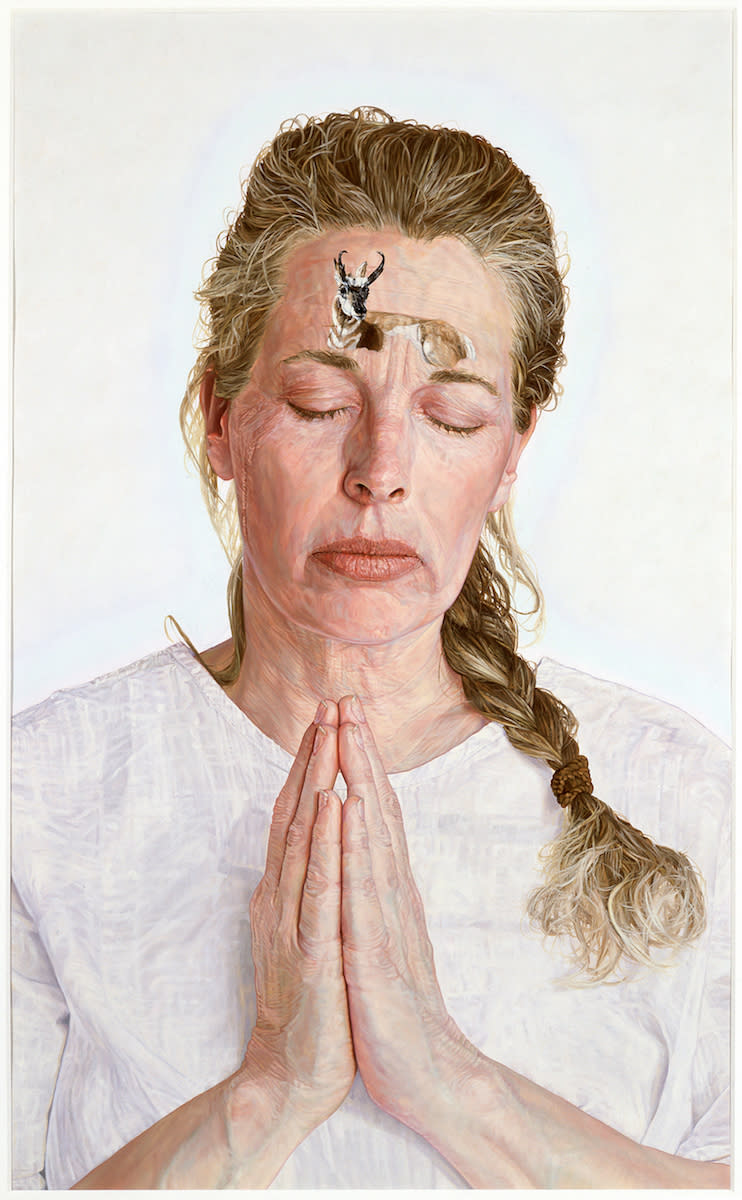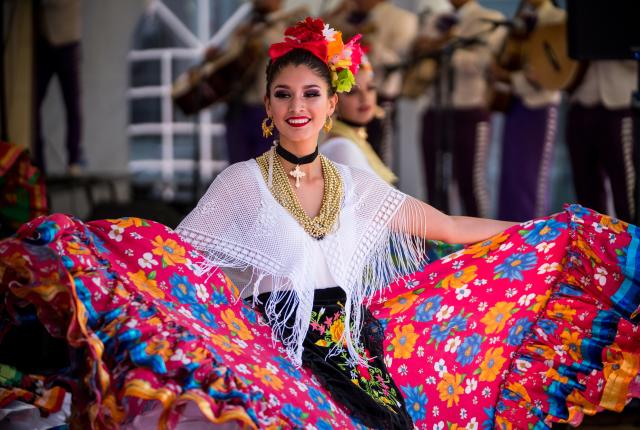A celebration of New Mexico’s Latin American heritage, customs and traditions, ¡Fiesta Latina! is a three-day family event, where participants explore Latin culture, rhythms, flavors and crafts at Western New Mexico University. Here, a ballet folklorico dancer performs to music by Mariachi Plata de WNMU. Photograph courtesy of Western New Mexico University.
MOST TRAVELERS KNOW to hit state parks, historic sites, MainStreet districts, and Insta-worthy cafes. But some overlook many areas’ most significant cultural hubs: public universities.
Traditionally looked to as beacons of innovative thought and educational advancement, universities are the keepers of cultural knowledge and often artifacts too. Rural universities have an even deeper challenge and responsibility to enrich their immediate cultural environments, maintaining offerings through innovative and virtual or low-contact methods.
They are the hosts of concerts, artist talks, and live theater; home of public art installations; hearts and minds training another generation of artists; moderators of cross-cultural dialog; and venues for community showcases—films, gatherings, conferences. Open to the public, campuses are natural destinations for New Mexico’s most impactful pieces of fine art, too—fitting homes for pieces acquired through the state-funded Art in Public Places Program.
Universities are a place to witness what makes locales distinctive, an intersection in the region’s cultural consciousness.
Legislative appropriations for the arts are 40% below 2001 funding levels, according to the National Assembly of State Arts Agencies, and pandemic-related economic impacts have decreased state arts agencies nationally by nearly 20%. So universities leverage community resources by partnering with local galleries, independent artists, and events organization and by pursuing essential arts funding from organizations such as New Mexico Arts, Westaf, and the National Endowment for the Arts.
New Mexico claims more artists per capita than any other state, and many hold day jobs at public education institutions—sharing their talent through, yes, regular classes but also workshops and contributions in the form of installations, performances and sales. With 1 in 18 jobs being in an arts and cultural industry here, these faculty artists propel New Mexico’s momentum and reputation as a leader in cultural tourism, sustaining economic development and preserving our state’s heritage and cultural assets.
In addition to growing a force of creative entrepreneurs, universities lead today’s conversations around diversity, broadening the public’s knowledge of both global and local cultures—raising awareness of Native American traditions and beliefs or Hispanic family dynamics and cultures, for example. Silver City’s ¡Fiesta Latina! exemplifies how universities facilitate cultural exploration and appreciation, which Western New Mexico University does by hosting artisans from all across Mexico on campus, where music, art, dance and food open pathways for creative exchange.
Tapping into the healing power of art and creativity, universities offer programs for veterans like the movement workshop that Western New Mexico University Cultural Affairs provided in conjunction with U.S. Marine combat veteran Román Baca, who uses ballet as a transformative coping tool and a means of changing perceptions of the veteran community.

Diane Marsh, “Rest In Me,” oil on paper, 40” x 26,” 2006. (Collection of Edwina and Charles Milner, Santa Fe, NM.) The artist of this painting will speak about her life and work during the fall 2021 WNMU Cultural Affairs Edwina and Charles Milner Women in the Arts Lecture Series. Photograph courtesy of Western New Mexico University.
At Applied Liberal Arts and Sciences institutions, which focus on empowering students to become collaborative workers and creative thinkers, arts and culture additions help students of all demographics and economic categories understand other cultures and find meaning in their work and lives. In fact, the National Endowment for the Arts found that participating in the arts leads adults to higher academic achievement, career goals and civic engagement.
The scholastic benefits of cultural programming on campuses aside, university cultural happenings promote more unified communities, as 72% believe the arts have the power to bring together people of many ages, races and ethnicities, according to an Americans for the Arts public opinion poll.
Travelers should seek out arts and cultural experiences on campuses to have positive experiences and feel uplifted beyond their everyday experiences. Participating in the arts gives three quarters of people something than can only be described as “pure pleasure,” according to the same poll. Isn’t that the feeling we all seek on vacation?


